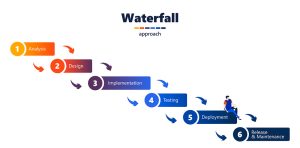SMART goal setting

Life without reference points is meaningless. Without expectations and in the absence of the need to strive somewhere, a person becomes inert, uninitiative. He loses faith in himself, does not realize his abilities. Does not follow his dreams, does not do anything to improve the situation, being satisfied with the minimum possible benefits that fate presents. Up to some time such a concept may seem quite acceptable. But, over time, this format of life causes a sense of hopelessness, leads to depression and chronic stress.
This statement fully applies to business. Without a clearly formulated goal and no idea how to achieve it, the company does not develop. Employees do not stay in the company because of low wages, lack of career development opportunities and other shortcomings. Properly formulated goals help you become more successful and organized. Achieve recognition in business and personal life. SMART methodology will tell you how to compose them more effectively. Let’s try to review and characterize this tool and tell you about it in as much detail as possible.
Essence and description of the methodology
The author of this approach is George Doran, and the name SMART itself translates from English as “smart”. In time management this concept denotes a system of goal setting, including specificity, measurability, achievability, importance and their timing. According to the SMART methodology, goals should be clear and transparent. After all, if a goal can be understood in several ways, someone in the team is bound to misunderstand it.
- Specific. SMART goals should be realistic, detailed and clear in their wording, in clear and understandable language. Be directly relevant to the business. Address its requirements, capabilities and specifics. Answer the question: What do we want to improve? (Increase sales, develop new markets, etc.).The essence of the method lies in its abbreviation. It encrypts the main criteria that a properly formulated goal must meet. SMART is deciphered by letters as follows:
- Measurable. SMART goals should have a numerical expression. What profit will we get when we enter a new market? What figure will mean that the goal has been achieved (1 million rubles per month, 20% conversion rate, etc.).
- Achievable. SMART goals should be considered both ambitious and achievable. To achieve success, it is important not to forget about the resources at your disposal. They should be enough to meet your needs and ambitions.
For example: How to achieve the goal? Is it too difficult for us? What will help or hinder its realization? Our main competitors have 20% of the market share. But, our resources and capabilities are enough to capture 35%. - Relevant. SMART goal does not need to contradict the company’s values and mission. Should be in line with its core business. Become an impetus for further development and prosperity.
For example: Why do we need it? Engaging the contract support department to call customers will help increase the percentage of repeat calls by 50%. - Time-bound. To have a time interval with an end date. For each smart goal you need to define the final and intermediate deadlines of the goal, by which a certain result should be achieved.
For example: How long will it take until the final project? A month, six months, a year, etc.
The deadline for some tasks depends on external conditions: market situation, agreements with contractors. Therefore, it is assigned in a directive order. For other tasks, the deadline is determined after agreement with the performers and the manager. If necessary, it is adjusted to one side or another, for possible revisions, survey and research work.
The less time allocated to a task, the more difficult it is to achieve. This should be taken into account when assigning tasks to employees. Then they will carry them out qualitatively and promptly.
SMART formulation algorithm
Step One: Study the company’s needs and problems
SMART goal setting begins with a review and formulation of needs. It is necessary to adequately analyze which areas need improvement and change. SWOT analysis can be used to identify “weak” areas. It will clearly demonstrate what factors negatively affect the efficiency of the company. What can be improved to gain an advantage over competitors.
The SMART method is a convenient goal-setting tool used in various spheres. It is used to formulate plans in marketing, personnel management, financial and production environments. That is, in all areas subject to planning and management.
When setting a goal, choose one area of the company’s activity, guided by the rule: “one SMART goal = one result”. At this stage, a brief description of what the company needs is developed. Example: a manager needs to improve customer acquisition by increasing the number of customers. The general wording would sound like: “Increase the number of new customers”.
Step Two: Check the relevance and importance of the goal
The result of the achievement should be an improvement in the company’s performance. That is, there should be an economic and financial benefit from its implementation. Example: Developing new markets will increase the number of customers. The organization will get more revenue. This will lead to profit growth, effective development, and further modernization of the company.
The goal should be meaningful, weighty, ambitious. It should give a concrete answer to the question: “Why?” But, at the same time, it should be relevant and achievable. If you want to attract more customers, but your sales department is not working effectively enough with the existing customer base, increasing the number of requests will lead to collapse. Employees simply won’t be able to provide quality customer service. They will leave, and with them you can lose your existing relationships. This situation is fraught with losses and financial losses for the company, loss of customer confidence. Therefore, when planning and formulating, it is important to correlate and evaluate the possibilities of their realization.
Step three: quantification
To quantify, you can use revenue, conversion, take audience reach, number of returning customers, and other metrics. They should demonstrate the difference: was/still. At this stage, the desired revenue, profit or other metrics are planned. The projected figure should be achievable and real. Otherwise, the goal will lose its meaning.
Example: you want to increase the number of customers. SMART goal at this stage: “Increase the number of customers by 15%”. For a more specific formulation, you need to specify a deadline.Example: you want to increase the number of customers. SMART goal at this stage: “Increase the number of customers by 15%”. For a more specific formulation, you need to specify a deadline.
Step four: Set a deadline
There should be a deadline for implementation. A schedule of tasks with scheduled completion dates for each stage. It will help control the workflow and prevent important tasks from being overlooked. The deadline should be realistic.
In order to have time to perform all actions to achieve the desired result, it should be planned with a reserve. To refine it, you can use the statistics of previous periods. Example: 3 months are allocated for the launch of an advertising campaign to attract clients. The wording will sound like: “Increase in the number of new customers by 15% in 3 months”.
When planning the period of achievement, it is worth limiting yourself to three months, six months or a year. Longer timeframes will unfocus the team working on its realization. Employees will simply forget about what needed to be done. And the goal itself will cease to be relevant to the company under the influence of various external factors.
Setting a deadline when formulating will help to plan tasks more effectively. Distribute them for the selected period. If the period of its achievement is more than three months, the goal should be broken down into several intermediate stages. This will make it easier to monitor progress.
Step Five: Checking whether the goal is achievable
To find out this question, we need to find out all the resource constraints. These include:
- Timing.
- Labor, information resources.
- Cash.
- Competencies and other tools needed to successfully complete the project.
If the analysis shows that the company has sufficient resources at its disposal, it can proceed to formulation and further implementation. If something is missing, it is necessary to decide where to get the missing resources.
The right SMART target should be achievable. It should take into account the value of the market and cost-effectiveness. The profit from achieving it must outweigh the costs. Otherwise, money and time of the company’s employees will be wasted.
Step Six: Concretize the goal
For a goal to be achievable, it must be clearly and transparently stated. It must be understandable to all those involved in its realization. For this purpose, action verbs should be used when setting the goal setting the goal to make it practically applicable. This will make it practically applicable. The indicators to be achieved in quantitative terms are specified. The deadline by which the work should be completed is defined.
The model of goal setting according to SMART methodology is presented in the form of a table:
| Action | Indicator | Quantification | Period of performance | Steps to get results |
| AchieveEarnEarnGainExceedExecute | Profit, traffic, number of customers, goods, sales volume, contracts, orders | 100 million rubles, up 35%,1,000 new clients, three times, 200 contracts | One month By May 20. By the end of 2022 | Win the best positions in the market. Automate production processes. Develop new business lines |
Vague, unspecific goals will not lead to the desired result. Here are some examples of poorly drafted goals taken from the life of companies:
- Improve the quality of customer service.
- Gain a competitive advantage in the marketplace.
- Increase subordinates’ interest in the work.
- Increase the professionalism of performers.
These formulations do not meet any of the SMART criteria. They are not specific, not relevant. They do not have a deadline. Their implementation cannot be monitored and quantified. Therefore, they will not lead to a concrete result.
How SMART goals help business development

The SMART method is applicable to all types of activities. It is a good tool for motivating employees. They clearly show what each participant in the process has to do. What his contribution to the common cause will be and how it will affect his financial well-being. Using the SMART technique, it is easier for the team to focus on the fulfillment of specific tasks. And the goal itself is easier to break down into tasks for its fulfillment.
SMART goals are easier to write step-by-step instructions describing the elements on the way to achieving them. Due to their clarity, definiteness and clear vision of the future result, they are easier to apply in practice. They help to assess whether the company has enough time, money and other resources to achieve the planned result. Provide procedures for dealing with force majeure.
Mastering the technology of setting SMART tasks facilitates the work of project managers. This tool is suitable for business and personal settings. The versatility, transparency, and convenience of goal-setting has made it popular in education and the digital sphere.
Rules for the application of the SMART methodology
The method has certain rules. These are:
- Relevant prioritization. The key criterion in SMART goal setting is “Relevant”, i.e. the importance, relevance of the goal. It implies understanding not what needs to be done, but why.
- Written notation. For this purpose, you can use diaries or special computer programs. This is necessary for timely adjustments and revisions of the goal as the plan progresses.
- Flexibility. Goals can be affected by a variety of factors. Therefore, goals must necessarily be adaptive.
- Motivation. Setting goals for heads of divisions, departments, employees is accompanied by the formation of performance indicators for their fulfillment. It can be a bonus, bonuses to smart and productive employees, additional payments to the salary and other options for motivation to achieve the goal.
Setting SMART goals in LeaderTask

There are many ways to achieve your goals. But, first of all, a good plan must be formed for their successful realization. To monitor and analyze progress, the goal should be documented. That is, it should be recorded on paper or electronically.
LeaderTask is a modern, functional online application for SMART goal setting. With its help you can effectively manage your personal and working time. Form tasks, delegate them to other employees. Organize joint work in a team.
LeaderTask electronic assistant combines the functions of task organizer, task planner, task manager and project management system. You can use it to group tasks into projects, create subtasks, and build a project tree. Attach any files, notes and comments to them. Create tasks from email. Exchange comments, learn about changes. Use a list of additional useful tools:
- Personal e-mail client;
- Gantt chart;
- A matrix of urgent and important matters;
- A ladder of goals;
- Kanban board, etc.
The application works on all digital platforms. It has a full-fledged mobile version, allows synchronizing data between all devices. It can be used in offline mode, without Internet access.
Conclusion
Among the advantages of the method are worth mentioning:
- Certainty of the result. If the goal is clearly defined, it is easier and faster to achieve.
- Ease of application. The SMART algorithm goal description is practically a ready-made example of an action plan.
- Saving staff time. Knowing what and how to do and how to do it within the framework of the goal, employees will fulfill it qualitatively, efficiently and promptly.
SMART-system is a universal tool for goal-setting. It is suitable for personal life, individual activity. It can be used in the strategy development of large production companies or implemented in a startup. SMART-goals are the most effective due to the clarity of their formulation. They are always specific, measurable, achievable, relevant and time-bound. Following the above tips when setting, in reality, will allow you to achieve better results with fewer resources. Make life organized and successful. Help the business to reach a new level of excellence. To make your own smart plan, using ready-made templates, formulas and guides will help.



